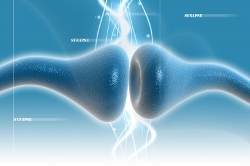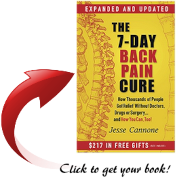 Before I get into the research, I’d like to do some housekeeping and make sure we’re on the same page regarding “TENS” and “PEMF”. “TENS” in this blog post refers to Transcutaneous Electrical Nerve Stimulation. It is a form of therapy for pain relief that uses low-voltage electrical current. Electrode pads from a machine are placed on target areas of the body, while it generates electrical impulses to produce pain relief. “PEMF” refers to Pulsed Electromagnetic Field, and a therapy based on PEMF, according to Wikipedia, “uses electrical energy to direct a series of magnetic pulses through injured tissue whereby each magnetic pulse induces a tiny electrical signal that stimulates cellular repair”.
Before I get into the research, I’d like to do some housekeeping and make sure we’re on the same page regarding “TENS” and “PEMF”. “TENS” in this blog post refers to Transcutaneous Electrical Nerve Stimulation. It is a form of therapy for pain relief that uses low-voltage electrical current. Electrode pads from a machine are placed on target areas of the body, while it generates electrical impulses to produce pain relief. “PEMF” refers to Pulsed Electromagnetic Field, and a therapy based on PEMF, according to Wikipedia, “uses electrical energy to direct a series of magnetic pulses through injured tissue whereby each magnetic pulse induces a tiny electrical signal that stimulates cellular repair”.
The following is a research that compared TENS, PEMF and other therapies in terms of its effectiveness in providing pain relief for osteoarthritic knee pain.
This research article titled “Short-term efficacy of physical interventions in osteoarthritic knee pain. A systematic review and meta-analysis of randomised placebo-controlled trials” was published on the BMC Musculoskeletal Disorders site.
Note, the BMC Musculoskeletal Disorders site “is an open access, peer-reviewed journal that considers articles on all aspects of the prevention, diagnosis and management of musculoskeletal and associated disorders, as well as related molecular genetics, pathophysiology, and epidemiology”. And thus, it is an authority site when it comes to conditions associated with, for example, neck and back pain, inflammation, fibromyalgia, herniated discs, and so on.
Here’s the abstract of the research …
“Background
Treatment efficacy of physical agents in osteoarthritis of the knee (OAK) pain has been largely unknown, and this systematic review was aimed at assessing their short-term efficacies for pain relief.
Methods
Systematic review with meta-analysis of efficacy within 1–4 weeks and at follow up at 1–12 weeks after the end of trea[t]ment.
Results
36 randomised placebo-controlled trials (RCTs) were identified with 2434 patients where 1391 patients received active treatment. 33 trials satisfied three or more out of five methodological criteria (Jadad scale). The patient sample had a mean age of 65.1 years and mean baseline pain of 62.9 mm on a 100 mm visual analogue scale (VAS). Within 4 weeks of the commencement of treatment manual acupuncture, static magnets and ultrasound therapies did not offer statistically significant short-term pain relief over placebo. Pulsed electromagnetic fields offered a small reduction in pain of 6.9 mm [95% CI: 2.2 to 11.6] (n = 487). Transcutaneous electrical nerve stimulation (TENS, including interferential currents), electro-acupuncture (EA) and low level laser therapy (LLLT) offered clinically relevant pain relieving effects of 18.8 mm [95% CI: 9.6 to 28.1] (n = 414), 21.9 mm [95% CI: 17.3 to 26.5] (n = 73) and 17.7 mm [95% CI: 8.1 to 27.3] (n = 343) on VAS respectively versus placebo control. In a subgroup analysis of trials with assumed optimal doses, short-term efficacy increased to 22.2 mm [95% CI: 18.1 to 26.3] for TENS, and 24.2 mm [95% CI: 17.3 to 31.3] for LLLT on VAS. Follow-up data up to 12 weeks were sparse, but positive effects seemed to persist for at least 4 weeks after the course of LLLT, EA and TENS treatment was stopped.
 Conclusion
Conclusion
TENS, EA and LLLT administered with optimal doses in an intensive 2–4 week treatment regimen, seem to offer clinically relevant short-term pain relief for OAK.”
So bottom line, TENS outperformed PEMF in this research when it came to providing pain relief for osteoarthritic knee pain. That’s just one study so it might not be a good idea to generalize the results. You should do further research and do your due diligence to determine whether TENS technology is right for your pain relief needs.
You can read the details of the entire study over here ===>>> “Short-term efficacy of physical interventions in osteoarthritic knee pain. A systematic review and meta-analysis of randomised placebo-controlled trials.”




